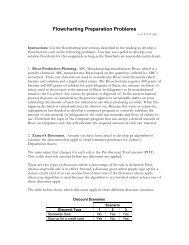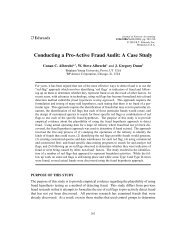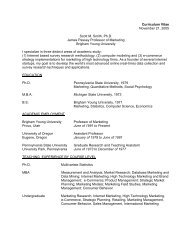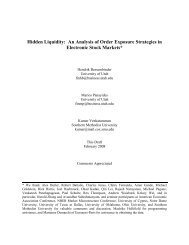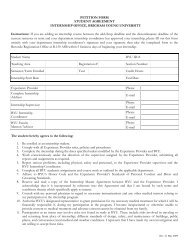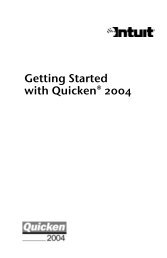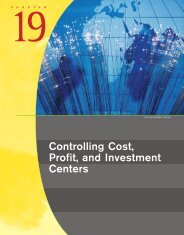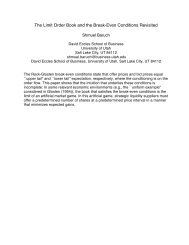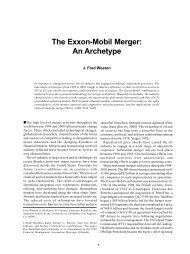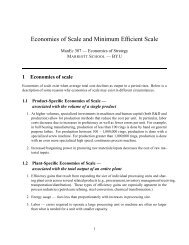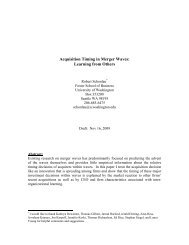why do firms go public? - Marriott School
why do firms go public? - Marriott School
why do firms go public? - Marriott School
You also want an ePaper? Increase the reach of your titles
YUMPU automatically turns print PDFs into web optimized ePapers that Google loves.
term increase in investment, but the increase <strong>do</strong>es not persist. As for leverage, independent <strong>firms</strong><br />
reduce their leverage immediately with persistence. On the other hand, carve-outs <strong>do</strong> not<br />
immediately reduce leverage, but <strong>do</strong> so in the long-run. For payout, no significant changes are<br />
detected after the IPO, in accordance with the prediction. Overall, Pagano et al (1998) provide<br />
mixed evidence for the borrowing constraint hypothesis. As we will see <strong>go</strong>ing forward, this mixed<br />
evidence conclusion will apply to all of the <strong>go</strong>ing <strong>public</strong> theories. The question soon becomes,<br />
which theories apply to which subsets of <strong>firms</strong><br />
To test the bank bargaining power hypothesis, Pagano et al. (1998) posit that <strong>firms</strong> facing<br />
higher interest rates and more concentrated credit sources should be more likely to <strong>go</strong> <strong>public</strong>.<br />
Credit cost is approximated with the ratio of the firm’s interest rate scaled by an average interest<br />
factor. Credit concentration is measured with a Herfindahl index of the lines of credit by all of its<br />
lenders. With post-IPO data, credit should become cheaper and more available for the newly<br />
<strong>public</strong> firm.<br />
Pagano et al. (1998) Table III (pg. 44) reports that neither the bank rate nor the credit<br />
concentration is a determining factor for the decision to <strong>go</strong> <strong>public</strong>. Using post-IPO data however,<br />
indicates that the cost of credit decreases for independent IPOs and the concentration of credit is<br />
reduced (particularly for independent IPOs). Thus, the IPO offering data <strong>do</strong>es not support the<br />
bargaining power hypothesis; but the post-IPO data <strong>do</strong>es.<br />
Asymmetric information/Pecking order of financing<br />
Based on asymmetric information between managers and investors and possible stock<br />
price misvaluation, Myers and Majluf (1984) and Myers (1984) argue for a pecking order of<br />
financing: internal equity, debt financing, and then external equity. This line of logic asserts that<br />
outside investors take the issuance of external equity as a negative signal, that management feels<br />
7



